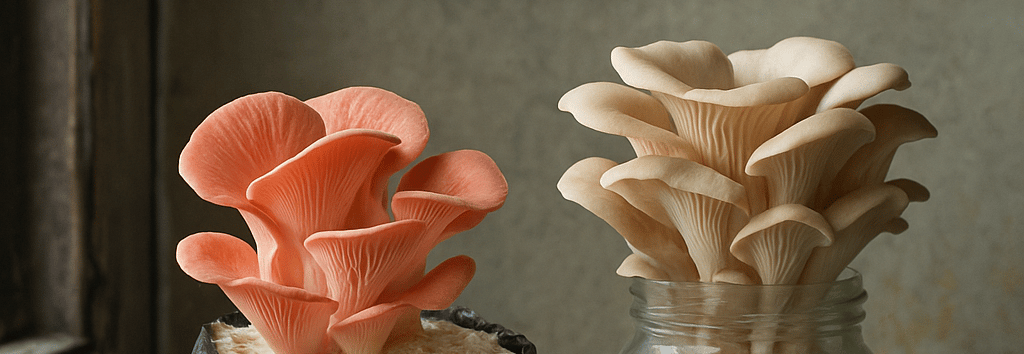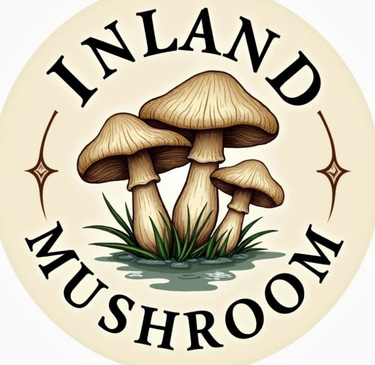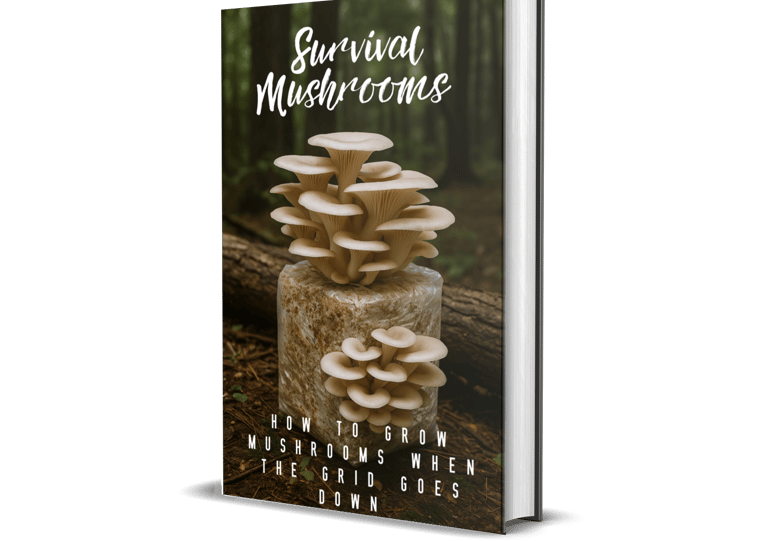How to Grow Mushrooms Without Electricity
Learn how to grow gourmet mushrooms without using electricity. Perfect for off-grid living, prepping, or low-tech home growing.
GROWING
7/11/20253 min read


How to Grow Mushrooms Without Electricity
If you're prepping for uncertain times or just looking to grow mushrooms without relying on electricity, you're in luck. While many growers use pressure cookers, fans, dehydrators, or even lab gear, it's absolutely possible to grow gourmet mushrooms with no electricity at all.
In this post, I’ll show you how to simplify your setup and still get solid results using old-school techniques — perfect for off-grid homesteads, survival situations, or even just cutting costs.
1. Use Ready-to-Go Substrate
You don’t need to sterilize blocks or jars if you start with pasteurized substrates like straw or coco coir. Both can be hydrated using only boiling water (from a propane stove or fire).
Tips:
Pasteurize straw in a cooler using near-boiling water and a thermometer.
Use coco coir with vermiculite for a contamination-resistant base.
2. Skip Grain Spawn — Use Outdoor Culture or Liquid Culture
If you don’t have a pressure cooker, grain spawn can be risky. But there are still ways to grow:
Use liquid culture injected into pasteurized bulk substrate (like straw or a coco coir/vermiculite mix).
This skips the grain entirely and reduces contamination risk. Just make sure the LC is clean and the substrate has cooled before injecting or mixing.Regrow from mushroom stem butts or outdoor mycelium.
If you find a fresh mushroom growing in the wild or from a grow kit, especially oysters or wine caps, you can try replanting the base (called a stem butt). Bury it in damp straw or wood chips, keep it shaded and moist, and with luck, the mycelium will take hold and spread.
You can also break off pieces of visible mycelium from a colonized patch or log and transplant it to a new area with fresh material. It’s not guaranteed, but in a pinch, it’s a valuable low-tech method.
3. Use Natural Humidity and Shade
Instead of a fruiting chamber or humidity tent, take advantage of nature:
Grow in shady spots like under trees, in greenhouses, or on the north side of structures.
Use wood chips or straw to hold in moisture.
Mist manually if needed using water from a rain barrel or jug.
4. Dry Mushrooms Without a Dehydrator
If you're off-grid or the power is out, here are a few effective ways to dry mushrooms:
Use a solar dehydrator or mesh screen setup.
Lay your mushrooms out in a single layer on a mesh screen, drying rack, or clean window screen. Place it in a sunny, breezy spot with good airflow — ideally covered with mesh or cheesecloth to keep bugs off. Flip mushrooms daily until crisp.
You can also build a simple solar dehydrator using a cardboard box lined with foil, a few vent holes, and a clear lid or plastic wrap to trap heat.Dry near a wood stove or fireplace.
Set up a small rack or mesh surface near (not directly on) a wood stove or heater. The radiant heat will help draw out moisture. Keep an eye on temps — too much heat can cook the mushrooms or damage flavor. For best results, slice them thin and turn regularly.Hang them with thread.
Use a needle and thread to string whole mushrooms (or halves) through the stems. Hang them in a warm, dry, and well-ventilated spot like near a sunny window or under a porch roof. It can take several days, but this method works surprisingly well — and looks kind of cool, too.Use a car as a solar dryer.
Park your car in full sun, crack the windows slightly for airflow, and place your mushrooms on a tray on the dash or rear deck. Temperatures inside can get high enough to dry mushrooms fast — just check for too much moisture buildup. Works best on hot, dry days.
5. Reuse Containers and Bags
No need for impulse sealers or grow bags — reuse what you have:
Buckets, bottles, protein powder containers, and even Tupperware work great.
Drill or cut holes for side fruiting.
Personal Note:
When I first started growing mushrooms, I didn’t have much gear. I boiled water on a stove, used old food containers, and fruited pink oysters in a protein tub by my back door. Some of my best flushes came from those early, no-electricity setups. The truth is, it doesn’t have to be complicated to work.
Want to be ready to grow mushrooms even if the grid goes down?
👉 Check out my full SHTF Mushroom Growing Guide — step-by-step low-tech methods, gear lists, and survival tips.
Cultivation
Helping you master gourmet mushroom cultivation — on or off the grid.
© 2024. All rights reserved.


